Offers Help Homeowners, Commercial Businesses Save Money on High-Efficiency Boiler Purchases Growing awareness of the benefits of energy efficiency and increasing performance standards for heating systems are important drivers in the boiler market. Focused on these trends, Weil-McLain, a leader in hydronic heating systems, recently launched EcoRebates industry-leading rebate tools on its website. The tools Read more
residential
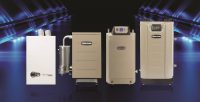
Offers Help Homeowners, Commercial Businesses Save Money on High-Efficiency Boiler Purchases
Growing awareness of the benefits of energy efficiency and increasing performance standards for heating systems are important drivers in the boiler market. Focused on these trends, Weil-McLain, a leader in hydronic heating systems, recently launched EcoRebates industry-leading rebate tools on its website. The tools automatically highlight rebate and incentive savings available to homeowners and commercial entities based on their location when they research and view qualified energy-efficient boiler equipment.
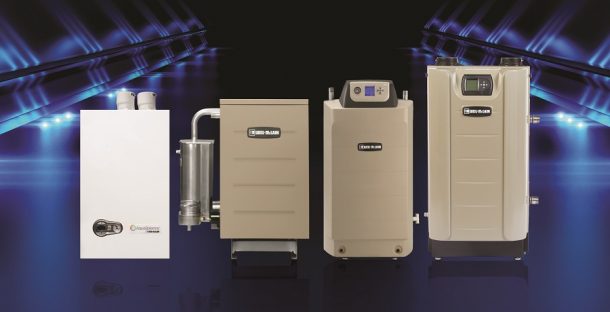
EcoRebates tracks thousands of rebate programs offered by utilities and energy service providers that offer cash-back to homeowners and commercial entities that purchase energy efficient hydronic heating equipment. Using the rebate tools on the Weil-McLain site, homeowners can easily find rebate savings, up to $2,500 in some areas, with higher savings available to commercial entities purchasing larger equipment.
“The rebate center is a powerful tool that is simple for homeowners and business owners to use and automatically displays location-based rebates and savings on energy efficient products in real-time,” said Scott Butterfield, VP of Marketing and Business Development at Weil-McLain. “We are excited to offer this solution to our sales team and dealers to provide a valuable way to present savings to customers throughout their high efficiency boiler purchase journey.
“Weil-McLain is the North American leading boiler manufacturer who remains strong in the high-efficiency boiler market,” added Brett Battles, Co-Founder and CEO at EcoRebates. “We’re pleased to work with them to deliver these valuable savings opportunities into the hands of their customers.”
More information on rebates for Weil-McLain residential and commercial boiler systems is available at www.weil-mclain.com/rebate-center.
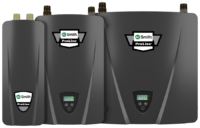
A. O. Smith, a leading water heater manufacturer, has added depth to its diverse product portfolio with the introduction of the ProLine® Electric Tankless family for commercial, residential and point-of-use applications. The ProLine Electric Tankless is available in three sizes, with 45 different models ranging from 2.4kW to 32kW and Uniform Energy Factor up to Read more
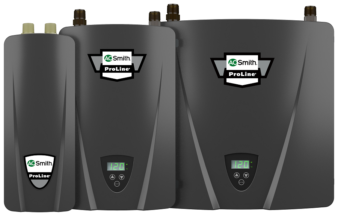 A. O. Smith, a leading water heater manufacturer, has added depth to its diverse product portfolio with the introduction of the ProLine® Electric Tankless family for commercial, residential and point-of-use applications.
A. O. Smith, a leading water heater manufacturer, has added depth to its diverse product portfolio with the introduction of the ProLine® Electric Tankless family for commercial, residential and point-of-use applications.
The ProLine Electric Tankless is available in three sizes, with 45 different models ranging from 2.4kW to 32kW and Uniform Energy Factor up to 0.93. The units are available in a variety of voltage options: 120V, 208V, 240V, and 277V.
A. O. Smith enters the electric tankless market with a number of innovative features and benefits previously unavailable in this category. All models have true Dry Fire Protection. The element will only turn on when the chamber is full of water, meaning that plumbers and electricians have the freedom to work without fear of costly dry fires. All models also have Scale Reduction Technology. This feature reduces scale formation on the elements and on the chamber walls, which reduces failures and service requirements. Further, the units do not contain any moving parts or screens—another common place scale buildup can occur.
“We’re excited to bring the ProLine Electric Tankless family to our partners, who can now offer a complete line of A. O. Smith products to their customers,” said David Chisolm, vice president of marketing at A. O. Smith. “Contractors will be extremely comfortable installing these units—which plumb very similarly to standard electric water heaters—and end-users will appreciate their compact size, reliability and energy-saving capabilities.”
The single-chamber design, which features a pre-heat function that helps bring domestic hot water faster to the fixture, is compact enough to be mounted directly under a sink, in a remote bathroom or other hard-to-plumb area.
The largest unit in the family, the four-chamber model, can produce up to 4.25 gallons of hot water per minute—enough to support 2.5 baths in a whole-home or multi-family application. The two-chamber design is ideal for applications where the heater is close to where the hot water is being used, such as cabins. Both sizes feature a soft start power draw, so that lights do not dim during a heavy power draw.
For the most up-to-date A. O. Smith news, like us on Facebook, follow us on Twitter and visit www.hotwater.com.
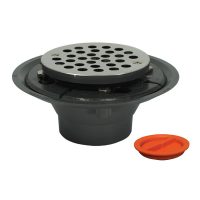
Jones Stephens, a World and Main Company, has launched a new disposable test plug which fits their existing line of residential shower drains. This test plug enables code required pressure testing of the drain- waste-vent system and wet testing of the shower liner membrane without the need of a separate testing device. Andy Yanka, Jones Read more
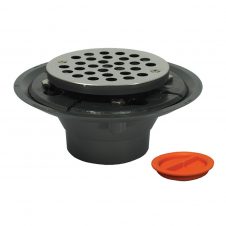 Jones Stephens, a World and Main Company, has launched a new disposable test plug which fits their existing line of residential shower drains. This test plug enables code required pressure testing of the drain- waste-vent system and wet testing of the shower liner membrane without the need of a separate testing device.
Jones Stephens, a World and Main Company, has launched a new disposable test plug which fits their existing line of residential shower drains. This test plug enables code required pressure testing of the drain- waste-vent system and wet testing of the shower liner membrane without the need of a separate testing device.
Andy Yanka, Jones Stephens’ Senior Director of Product Management shares, “our new product development team is laser focused on finding ways to save plumbers time and money and this innovation embodies that approach. We want plumbers to know that Jones Stephens products are designed specifically to make their lives better.”
The preinstalled plug is secured in place by the spud during construction and testing. Once all testing is complete and the finishing touches are being placed on the bathroom, the plug is easily removed with pliers and discarded.
Jones Stephens 2”x3” residential shower drains have many options available. Plastic and brass spuds, round and square snap-in or screw-in strainers, plus many different finish options.
To find out more information, visit www.jonesstephens.com
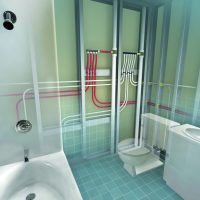
For residential plumbers, there have been two schools of thought for plumbing a house: home run and trunk and branch. Both have their positives and negatives, depending on what you’re trying to accomplish with the plumbing system. However, you may not know there’s a new (and smarter) way to design and install a residential plumbing Read more
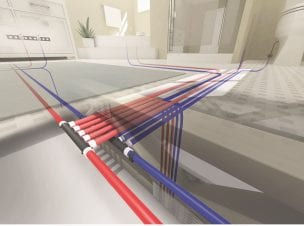 For residential plumbers, there have been two schools of thought for plumbing a house: home run and trunk and branch. Both have their positives and negatives, depending on what you’re trying to accomplish with the plumbing system.
For residential plumbers, there have been two schools of thought for plumbing a house: home run and trunk and branch. Both have their positives and negatives, depending on what you’re trying to accomplish with the plumbing system.
However, you may not know there’s a new (and smarter) way to design and install a residential plumbing system that installs faster, uses less materials, requires fewer connections, minimizes your liability and operates more efficiently.
It’s called Logic plumbing.
A Logic plumbing design can only be used with PEX piping, but since PEX is now used in more new-home construction than copper and CPVC combined, you’re most likely already using it. (And if you’re not, you need to check it out. PEX is highly durable, flexible and more cost-effective compared to copper and CPVC.)
The Logic approach leverages the flexibility of PEX pipe to minimize connections and reduce potential leak points while also incorporating multiport tees located near fixture groupings to both limit the amount of pipe and connections needed while also improving installation efficiencies and system performance.
What’s a multiport tee?
I’m sure right now you’re wondering, “What’s a multiport tee?” It’s essentially a bunch of tees all molded together to create one long tee with multiple outlets. This innovative product minimizes connections and is the heart and soul of a Logic design.
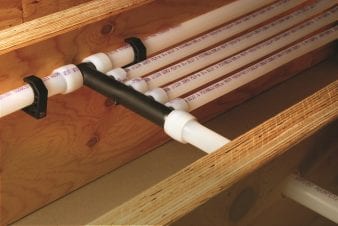 For example, six regular tees will have 18 connections, but a flow-through multiport tee with six outlets will only have eight connections (six connections for the ports, a main flow-through inlet and a main flow-through outlet). Think about how much faster you could install a system when you’re making half the number of connections.
For example, six regular tees will have 18 connections, but a flow-through multiport tee with six outlets will only have eight connections (six connections for the ports, a main flow-through inlet and a main flow-through outlet). Think about how much faster you could install a system when you’re making half the number of connections.
And get this — while multiport tees may resemble a manifold, they have the benefit of being hidden behind walls without the need for an access panel. Yes, you heard that right. No need for an access panel, minimizing costs and labor to help keep your projects on schedule and on budget.
Multiport tees are made of engineered polymer (EP), a thermoplastic material that has been used in plumbing applications for more than 20 years. EP has superior mechanical, chemical and thermal properties that provide dimensional stability in demanding applications, including areas of high stress, heat and moisture.
And, like PEX, the EP material in multiport tees resists corrosion, pitting and scaling, so it creates a highly durable system that’s engineered to last. Best of all, multiport tees (as well as all EP fittings) are approved for direct burial in the soil or concrete slab, so they are ideal for in-slab plumbing applications.
The Logic layout
So what exactly is a Logic plumbing layout? It’s quite simple: a main line connects to a multiport tee with distribution lines going out from the tee. These individual lines extending from the single multiport tee provide water to all fixtures in a single or adjacent grouping.
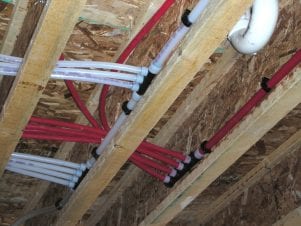 This design uses significantly less pipe than a home-run layout, with just a few more connections. Plus, it requires considerably fewer connections compared to a trunk-and-branch installation.
This design uses significantly less pipe than a home-run layout, with just a few more connections. Plus, it requires considerably fewer connections compared to a trunk-and-branch installation.
For example, a 2,300-square-foot, two-story home using a Logic design requires only 637 feet of pipe while a home-run system uses 1,515 feet of pipe. That’s more than twice the amount of piping necessary.
In addition to the added costs required to install all that extra pipe, the system performance is also greatly reduced due to added pressure loss and longer wait times for hot water. Plus, all the extra pipe can lead to issues isolating hot and cold water lines. This increases heat transfer and energy inefficiencies within the plumbing system.
And, while it’s true a Logic installation uses slightly more connections than a home-run layout (59 vs. 48 in the 2,300-square-foot, two-story home example above), the amount of pipe savings is significantly more beneficial with the labor and material savings you get with less pipe to install (not to mention the efficiency of the system).
A Logic layout also installs much faster compared to a trunk-and-branch system due to the vast reduction in connections. With the two-story home example above, a Logic layout uses a mere 16 fittings and 59 connections compared to a whopping 96 fittings and 165 connections for trunk and branch. That’s six times the number of fittings and nearly three times the amount of connections!
All those added connections greatly increase your liability with more potential for leaks, plus it also limits the performance of the system with increased pressure loss.
So there you have it! Just a few “logical” reasons why you should consider a smarter approach to plumbing a home that will improve your installation times, limit your liability and offer an all-around better-performing system for the end user.

Kim Bliss is the content development manager at Uponor. She can be reached at kim.bliss@uponor.com.
Lochinvar is enhancing its top-performing high-efficiency condensing residential KNIGHT Fire Tube Boiler series with 95 percent DOE AFUE and advanced control functionality for optimized heating comfort. Now in its fourth generation, the designed, engineered and assembled in the U.S.A. KNIGHT Fire Tube Boiler contains 13 models — seven wall-mount options (55,000 to 399,000 Btu/hr) and Read more
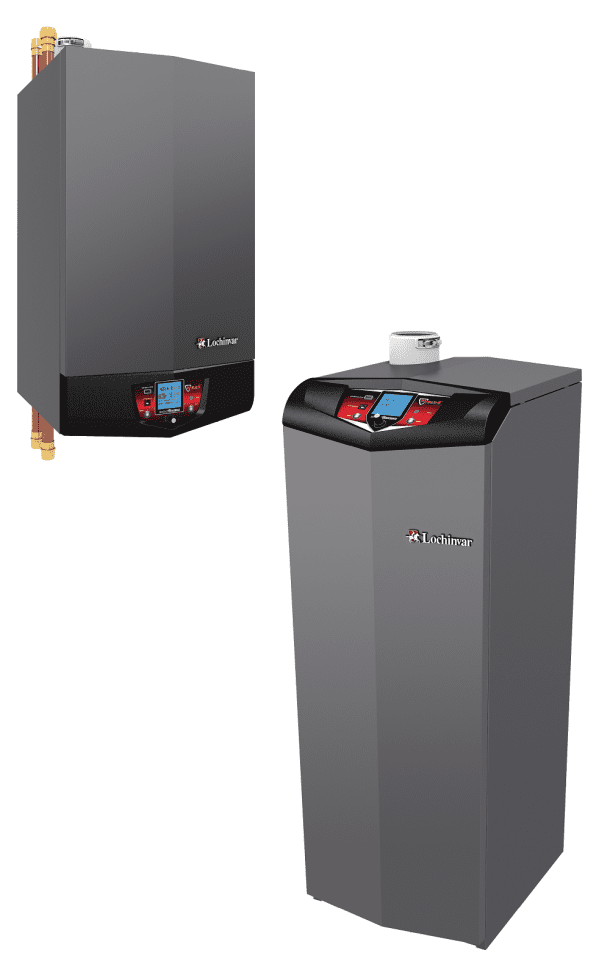 Lochinvar is enhancing its top-performing high-efficiency condensing residential KNIGHT Fire Tube Boiler series with 95 percent DOE AFUE and advanced control functionality for optimized heating comfort.
Lochinvar is enhancing its top-performing high-efficiency condensing residential KNIGHT Fire Tube Boiler series with 95 percent DOE AFUE and advanced control functionality for optimized heating comfort.
Now in its fourth generation, the designed, engineered and assembled in the U.S.A. KNIGHT Fire Tube Boiler contains 13 models — seven wall-mount options (55,000 to 399,000 Btu/hr) and six floor-standing models (55,000 to 285,000 Btu/hr) — with turndown ratios of up to 10:1.
“Lochinvar’s engineering team does not rest on the success of a great product, and the KNIGHT Fire Tube Boiler evolution is proof of our relentless push to improve performance for homeowners and make installation and set up a snap for contractors,” said Dan Rettig, residential product manager at Lochinvar. “Whether a contractor is installing for new construction or performing a drop-in replacement on an older boiler system, the KNIGHT series has the flexibility and muscle to meet the space-heating demands of nearly any residential application. This is without a doubt the best KNIGHT boiler yet.”
To achieve cost-efficient performance and rugged reliability for homeowners, the KNIGHT Fire Tube Boiler is manufactured with high-quality components, including a corrosion-resistant stainless steel fire-tube heat exchanger and a negative regulation combustion system. Additionally, each KNIGHT boiler will be packaged with a variable-speed ECM circulator, which can save up to 90 percent on operational costs over a conventional circulator.
Every KNIGHT Fire Tube Boiler comes equipped with SMART SYSTEM, the industry’s most advanced boiler control system, which now includes the CON·X·US Remote Connect option and the LOCH-N-LINK® USB Programming feature. The Set-Up Wizard guides contractors through installation programming while Lochinvar’s exclusive CON·X·US Remote Connect option allows a technician or homeowner to monitor and manage the boiler from a mobile app.
Lightweight with a compact footprint and easy-to-access components, the entire series is designed to make installation, setup and serviceability straightforward for contractors. For instance, the KNIGHT Fire Tube Boiler features:
- LOCH-N-LINK USB Programming with parameters uploaded from a thumb drive
- Universal vent adapter, which allows for easy transition to multiple types of vent material
- Variable-speed pump that increases system efficiency and reduces operational costs
- Dual location parameter memory for quick and simple component replacement
- Electrical outlet on the unit for a work light or condensate pump
- Wall- and floor-mount options with top and bottom water connections.
For larger residential applications, KNIGHT Fire Tube boilers can be cascaded together for redundancy and may also be paired with an indirect water heater.
The high-efficiency condensing gas KNIGHT Fire Tube Boiler series first launched in 2005. Since its introduction and through four generations, the KNIGHT Fire Tube boiler has established a reputation for reliable performance among contractors.
For more information about Lochinvar, visit www.Lochinvar.com.
